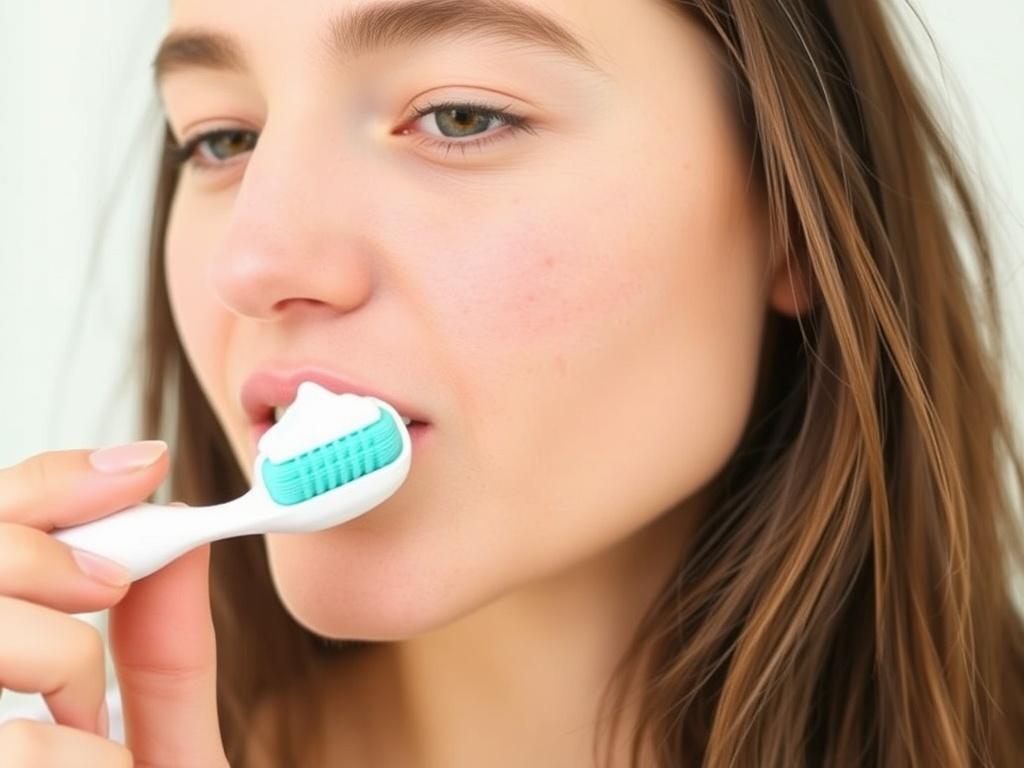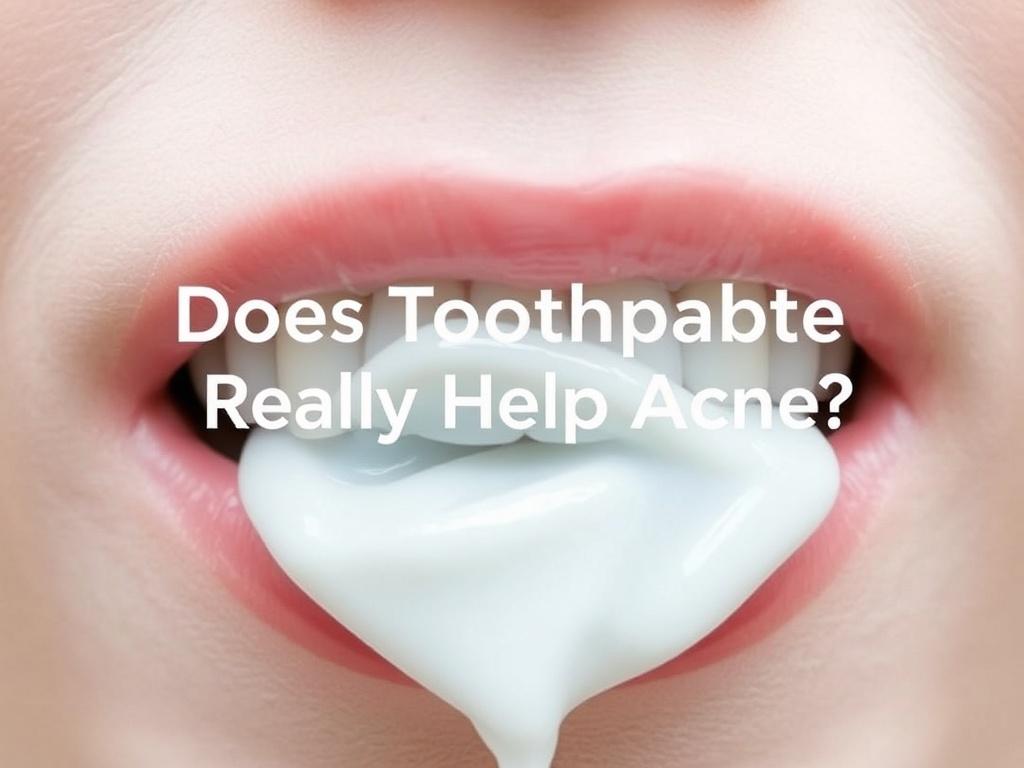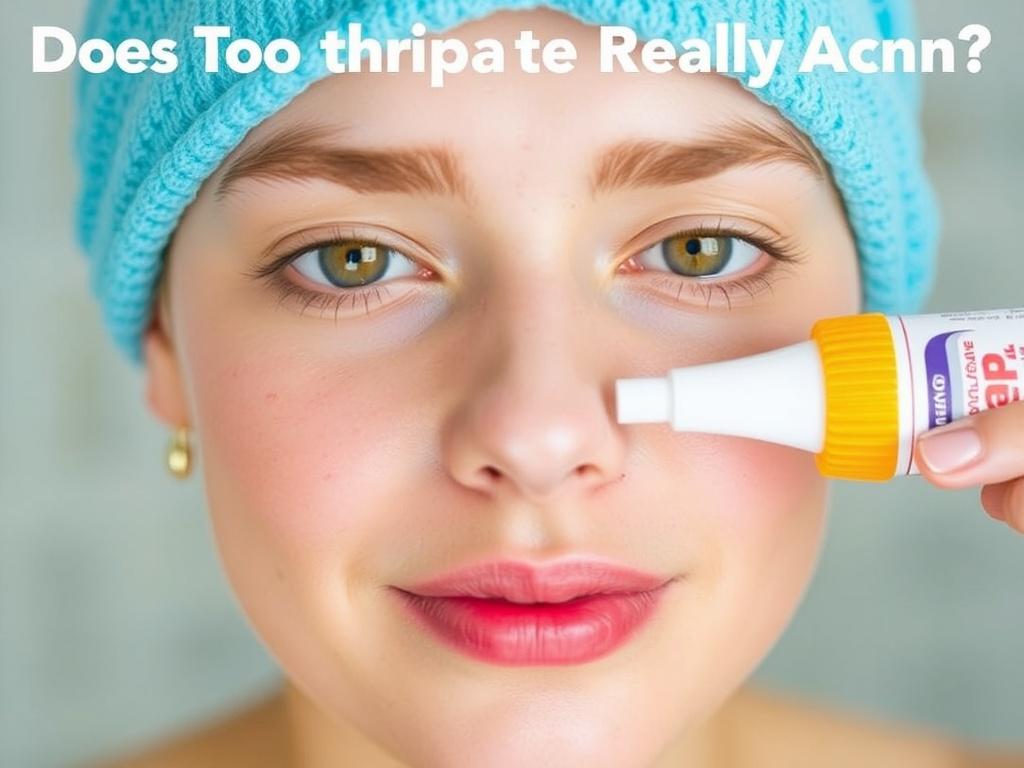Содержание статьи
- 1 Understanding Acne: What Causes Those Pesky Pimples?
- 2 Why Do People Think Toothpaste Helps Acne?
- 3 The Downside: Risks of Using Toothpaste on Acne
- 4 Better Alternatives: What Actually Helps Acne?
- 5 Tips for Managing Acne Safely at Home
- 6 Summary Table: Toothpaste vs. Proper Acne Treatments
- 7 Conclusion
Acne is one of those persistent skin problems that almost everyone faces at some point in their life. Whether you’re battling occasional breakouts or struggling with chronic acne, finding an effective and affordable solution can feel like an endless quest. One remedy you’ve probably heard about is using toothpaste to dry out pimples. The idea that “toothpaste helps acne” has become a common piece of advice passed around through word of mouth, social media, and countless internet forums. But does toothpaste really help acne? Or is it just another myth that might do more harm than good?
In this article, we’ll explore the science behind why some people swear by toothpaste as an acne treatment, what ingredients in toothpaste could potentially impact your skin, the risks and benefits of using toothpaste on pimples, and some better alternatives you should consider. By the end, you’ll have a clear understanding of whether toothpaste is a secret weapon for your skin or just a quick fix that might backfire.
Understanding Acne: What Causes Those Pesky Pimples?

Before diving into whether toothpaste really helps acne, it’s essential to understand what acne actually is. Acne occurs when hair follicles become clogged with oil, dead skin cells, and bacteria. These blockages lead to inflammation, which manifests as pimples, blackheads, whiteheads, or cysts. Hormonal changes, stress, diet, and genetics all play a role in how severe or frequent your acne is.
The most common spots for acne are your face, back, chest, and shoulders because these areas tend to have more oil glands. To effectively treat acne, the goal is to reduce excess oil, kill bacteria, and encourage the skin to heal without causing more irritation. With that in mind, it’s easy to understand why people look for home remedies that claim to “dry out” pimples, like toothpaste.
Why Do People Think Toothpaste Helps Acne?
You may have heard advice like “dab toothpaste on your pimple overnight and it will be gone by morning.” Sounds simple, right? The idea primarily comes from toothpaste’s ability to dry out moisture. When you squeeze a clear gel or white paste on a breakout, it feels like the blemish is shrinking as moisture evaporates.
The core belief is that toothpaste ingredients such as baking soda, hydrogen peroxide, alcohol, and menthol have antibacterial and drying properties strong enough to kill acne-causing bacteria or reduce inflammation. Some toothpastes even contain triclosan, an antibacterial agent, which could theoretically help combat bacterial infections on the skin.
Common Ingredients in Toothpaste and Their Potential Effects on Acne
Let’s break down some typical toothpaste ingredients and see how they might influence acne:
| Ingredient | Properties | Possible Effect on Acne |
|---|---|---|
| Baking Soda | Alkaline substance, mildly abrasive | May dry out oil but can disrupt skin pH and cause irritation |
| Hydrogen Peroxide | Antiseptic and oxidizing agent | Kills bacteria but can damage skin cells and delay healing |
| Alcohol | Antibacterial, drying | Dries pimples but may irritate and over-dry skin |
| Menthol/Mint | Cooling, soothing sensation | Temporary relief from inflammation but can worsen sensitivity |
| Fluoride | Cavity prevention, anti-bacterial | No proven benefit for acne; may irritate skin |
While some ingredients have antibacterial properties that could theoretically help acne, others pose problems by irritating the skin or disrupting its natural balance. The skin’s surface is mildly acidic, and toothpastes which are alkaline can upset this environment, making the skin more prone to inflammation or dryness.
The Downside: Risks of Using Toothpaste on Acne
Despite the occasional success stories, many dermatologists strongly caution against using toothpaste to treat acne. Here’s why:
- Skin Irritation: Toothpaste is formulated for the hard surface of your teeth, not the delicate skin of your face. Ingredients like baking soda, detergents, and fluoride can cause redness, peeling, burning, and even chemical burns in sensitive skin.
- Pain and Inflammation: Rather than calming a pimple, toothpaste could worsen inflammation. The irritation may make you more likely to pick at your skin, which increases the chance of scarring.
- Disruption of Skin Barrier: Healthy skin has a protective barrier that controls moisture loss and keeps bacteria out. Using harsh substances like toothpaste can strip this barrier, leading to dryness and more breakouts.
- Unpredictable Reactions: Every person’s skin reacts differently. What seems to dry a blister today could cause a rash or allergic reaction tomorrow.
In fact, a study published in the journal Clinical Pediatrics warned parents about the dangers of using toothpaste for acne, citing cases where children developed severe skin irritation and even burns from this practice.
Why Does Toothpaste Sometimes Seem to Work?
If toothpaste isn’t a recommended acne treatment, why do so many people believe it’s effective? There are a few reasons:
- Immediate Drying Effect: Toothpaste contains drying agents like alcohol that temporarily reduce the appearance of swelling or shine on a pimple.
- Placebo Effect: Believing a treatment works can sometimes help you feel better about your skin, even if the remedy isn’t scientifically valid.
- Natural Healing Over Time: Many mild pimples disappear on their own within a day or two, so the toothpaste gets credited for something your immune system does naturally.
Still, these effects are temporary and come at the risk of skin damage, which is why professionals rarely endorse toothpaste as a treatment.
Better Alternatives: What Actually Helps Acne?

If toothpaste is a dangerous myth rather than a miracle, what should you use instead? Luckily, modern skincare offers a range of scientifically proven treatments that are both effective and gentle on the skin. Here are some popular and dermatologist-approved approaches:
Over-the-Counter Topical Treatments
Most acne treatments fall into a few key categories and active ingredients:
| Ingredient | Function | How to Use |
|---|---|---|
| Benzoyl Peroxide | Kills acne-causing bacteria, reduces oil, unclogs pores | Apply a thin layer once or twice daily, avoid sensitive areas |
| Salicylic Acid | Exfoliates dead skin cells, clears pores | Use in cleansers or spot treatments daily |
| Retinoids (Adapalene) | Promotes cell turnover, prevents clogged pores | Apply at night; can cause initial dryness |
| Alpha Hydroxy Acids (AHAs) | Exfoliates top skin layers, improves texture | In cleansers, toners, or creams; use sunscreen |
These ingredients address the root causes of acne rather than just drying out spots temporarily. They are formulated specifically for skin use and often come with instructions to minimize irritation.
Natural Alternatives With Scientific Backing
For those who prefer natural remedies, a few options have shown promise in acne management:
- Tea Tree Oil: Has antibacterial and anti-inflammatory properties. Use diluted to avoid irritation.
- Honey and Cinnamon Mask: Both have antimicrobial effects; useful for mild acne.
- Aloe Vera: Soothes inflammation and supports skin healing.
While natural remedies may take longer to work, they carry fewer risks than toothpaste. Always patch test new ingredients to ensure you don’t have an allergic reaction.
Tips for Managing Acne Safely at Home
Whether you opt for over-the-counter products or prefer natural solutions, following these basic skincare tips can help you achieve clearer skin safely:
- Gentle Cleansing: Wash your face twice daily with a mild cleanser. Avoid scrubbing hard or using harsh soaps.
- Moisturize: Use an oil-free, non-comedogenic moisturizer to maintain your skin barrier.
- Avoid Picking: Resist the urge to squeeze or pop pimples as this can cause scarring.
- Use Sunscreen: Many acne treatments increase sun sensitivity, so daily SPF is essential.
- Consistency is Key: Acne treatments take weeks to show results, so be patient and avoid switching products too quickly.
When to See a Dermatologist
If your acne is severe, painful, or leaving scars, it’s best to consult a dermatologist. They can prescribe stronger medications like oral antibiotics, hormonal treatments, or isotretinoin, and tailor a skincare plan to your unique needs.
Summary Table: Toothpaste vs. Proper Acne Treatments
| Aspect | Toothpaste on Acne | Recommended Acne Treatments |
|---|---|---|
| Purpose | Dry out pimples quickly | Reduce bacteria, unclog pores, reduce inflammation |
| Effectiveness | Temporary drying; inconsistent results | Clinically proven; improves acne over time |
| Risks | Skin irritation, burns, worsened inflammation | Mild irritation possible; mostly safe when used correctly |
| Ease of Use | Simple but risky and unreliable | Requires routine and patience |
| Cost | Very cheap (already at home) | Varies from affordable OTC to prescription |
Conclusion

So, does toothpaste really help acne? The short answer is no—not in the way many people hope it does. While toothpaste might have drying ingredients and antibacterial agents, these are not formulated for delicate facial skin and often cause more harm than good. The irritation, redness, and potential chemical burns from toothpaste outweigh any temporary benefits it may provide. Instead, it’s far better to rely on proven acne treatments like benzoyl peroxide, salicylic acid, and retinoids that work to tackle the root causes of breakouts with less risk. Pair these with a gentle skincare routine, patience, and perhaps professional medical advice, and you’ll be on a much safer and more effective path to clear skin than resorting to the toothpaste myth. Remember, taking care of your skin gently is often the best medicine.


